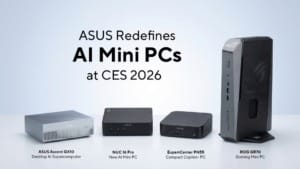Solace: Transforming traditional banking with event-driven AI
How retail banks can transform digital interactions from transactional to conversational using AI, event-driven integration, and context mesh technology.

Digital transformation has reshaped how retail banks engage with customers, offering unmatched convenience and accessibility. With mobile apps and online platforms, customers can transfer funds, apply for loans, and monitor their finances within minutes. However, this efficiency comes at a cost: the personal connection that once defined banking relationships is fading.
Table Of Content
For decades, customers have trusted their local bank staff for personalised advice and support. Branch visits went beyond transactions, fostering relationships that contributed to long-term loyalty. Today, digital channels have replaced much of that face-to-face engagement, making it difficult for banks to distinguish themselves in a crowded marketplace. Close to half (42%) of consumers now find it challenging to distinguish between financial services brands – implying a growing homogeneity in the sector, and an uphill battle to optimise customer experiences and build brand loyalty.
Without meaningful engagement, customers are increasingly inclined to select banks based on convenience or pricing, which leaves institutions vulnerable to high customer churn. To address this, banks must evolve their digital offerings and recreate the personalised service that once thrived within physical branches.
AI as the bridge between transactions and personalised conversations
The future of banking lies in moving from static, product-centric services to dynamic, experience-driven engagements, and Artificial Intelligence (AI) plays a key role in making this shift possible. Unlike traditional digital systems that handle predefined tasks, AI can continuously learn from interactions and adapt responses to individual customer needs, creating personalised conversations beyond routine transactions.

AI-powered chatbots and virtual assistants are transforming customer interactions by leveraging vast amounts of data. These tools analyse customer behaviours, transaction histories, and financial goals to deliver tailored advice and recommendations. For example, an AI system could detect when a customer has received a large deposit and recommend suitable investment options or savings plans.
AI enhances engagement by offering contextual recommendations in real-time. For example, if a customer frequently overspends during the holidays, an AI-driven system could suggest budgeting tips or cashback offers. However, AI cannot develop a comprehensive understanding of individual customers without a unified view of customer data, limiting its ability to generate real-time insights and effectively offer personalised experiences.
Breaking down data silos with event-driven integration
One of the biggest challenges facing retail banks is fragmented data due to legacy systems. Many financial institutions store customer information in silos, separated across departments like credit services, loyalty programmes, and investments. This lack of integration makes it difficult for AI systems to access a complete view of the customer, leading to generic and less effective interactions.

“AI cannot develop a comprehensive understanding of individual customers without a unified view of customer data, limiting its ability to generate real-time insights and effectively offer personalised experiences,” explains Phil Scanlon, Senior Vice President for Global Solution Engineering, Solace. Event-driven integration provides a solution by enabling real-time data sharing between different systems. Instead of relying on delayed batch updates, event-driven systems capture and share data as soon as an event occurs, such as when a customer makes a payment or completes a transaction.
With real-time updates, banks can ensure that AI applications always have access to current and accurate data. For instance, when customers use their debit cards, the loyalty programme, credit monitoring system, and budgeting tool can be updated simultaneously. This integration ensures more personalised and contextual interactions across multiple channels, reducing response times and improving overall service quality.
Unlocking AI’s full potential with a context mesh
Event-driven integration is a crucial first step, but its full potential is realised when combined with a context mesh. This dynamic data distribution layer gives AI systems the context to make better decisions.
This data distribution layer is known as a context mesh, which is an application of an event mesh—an interconnected network of event brokers that routes real-time information (think data as events) between applications and devices globally. For example, interactions such as a customer making an online purchase or engaging with a robo-advisor are processed as events and transmitted seamlessly through the mesh.
Furthermore, as a context mesh is underpinned by event-driven integration, organisations can quickly unlock events and data from existing applications without the need for extensive reconfiguration. At the core of this integration is the event broker, which plays a critical role in ensuring the smart and reliable transmission of events between different components within the system. Acting as a mediator between publishers and subscribers, the event broker ensures that data flows smoothly, allowing event-driven applications to deliver real-time insights. As the cornerstone of event-driven architecture, it ensures that every interaction—whether from a customer’s mobile app or a backend transaction—is instantly processed and distributed where needed.
By aggregating and distributing data from multiple sources, the context mesh ensures that AI applications have access to a complete and up-to-date view of the customer’s financial journey. For instance, when a customer contacts their bank to discuss retirement planning, the context mesh provides key information such as their savings history, recent spending habits, and projected income. This enables the AI-powered assistant to offer personalised and actionable recommendations, enhancing customer satisfaction and engagement.

Additionally, the flexibility of the context mesh ensures that banks can trial and deploy new AI models seamlessly, without disrupting ongoing operations. This adaptability is essential for maintaining continuous innovation and keeping pace with changing customer needs and market trends.
Enhancing customer experiences and driving sustainable innovation
By adopting event-driven integration and a context mesh, retail banks can unlock several strategic benefits:
- Accelerated AI implementation – With access to real-time data, banks can deploy AI-powered applications quickly and efficiently, reducing development and testing time. This ensures that new services can be launched faster, keeping banks ahead of the competition.
- Continuous service improvement – Real-time insights allow AI systems to refine their recommendations and services based on shifting customer needs. For example, changes in spending patterns can trigger adjustments in budgeting tools or personalised product offers, ensuring that customers always receive timely, relevant advice.
- Scalable innovation – A context mesh allows banks to trial and deploy new AI models without major system overhauls. By seamlessly integrating new technologies, banks can experiment with emerging solutions and adapt to evolving customer expectations.
Retail banks cannot afford to view AI as just a technological upgrade but rather a much-needed shift towards putting the customer at the centre of the loyalty experience. Banks that embrace this shift will be better positioned to deliver superior, personalised services while fostering long-term loyalty.
Building loyalty through life-centric banking
AI is the foundation of a life-centric approach to banking, where the customer’s experiences and well-being are prioritised. By integrating AI with event-driven systems and context meshes, banks can replicate the personal touch traditionally offered in branches but on a much larger scale.
Banks can offer advice and solutions tailored to customers’ financial journeys with real-time data and AI-driven insights. Personalisation at this level can help banks differentiate themselves from competitors and establish a position as trusted partners in their customers’ lives.
As digital transformation continues to shape the financial sector, banks that successfully blend technological innovation with human-like engagement will have a distinct competitive advantage. By shifting from transactional services to personalised conversations, retail banks can achieve what truly matters: enduring trust and long-term loyalty.













